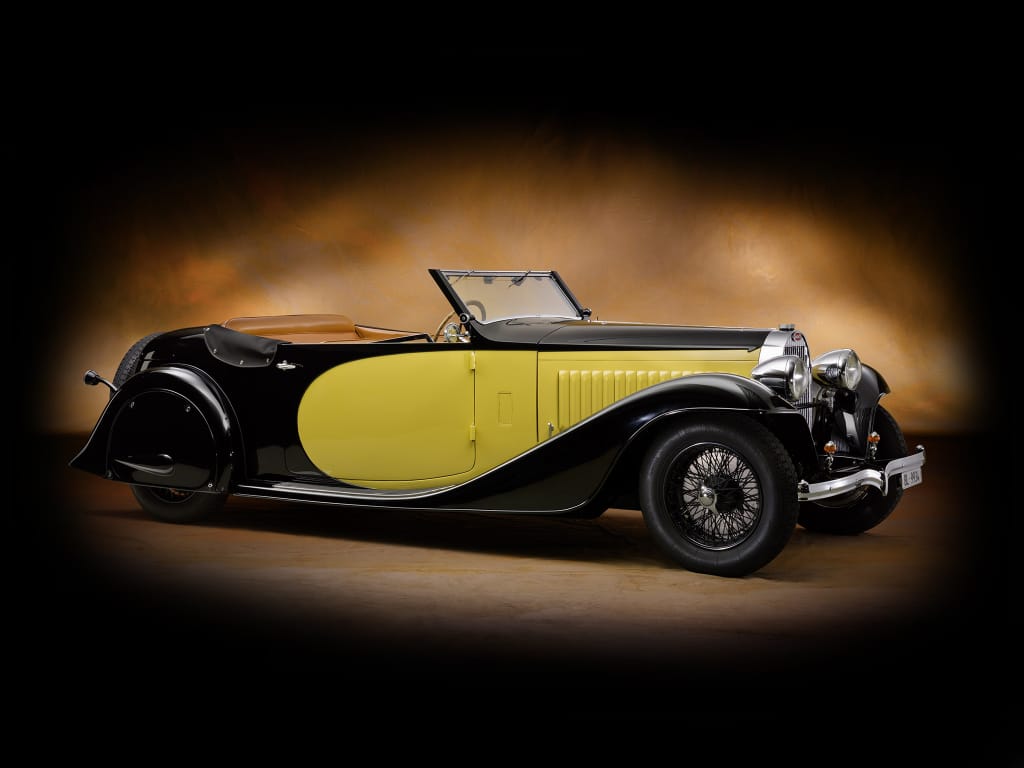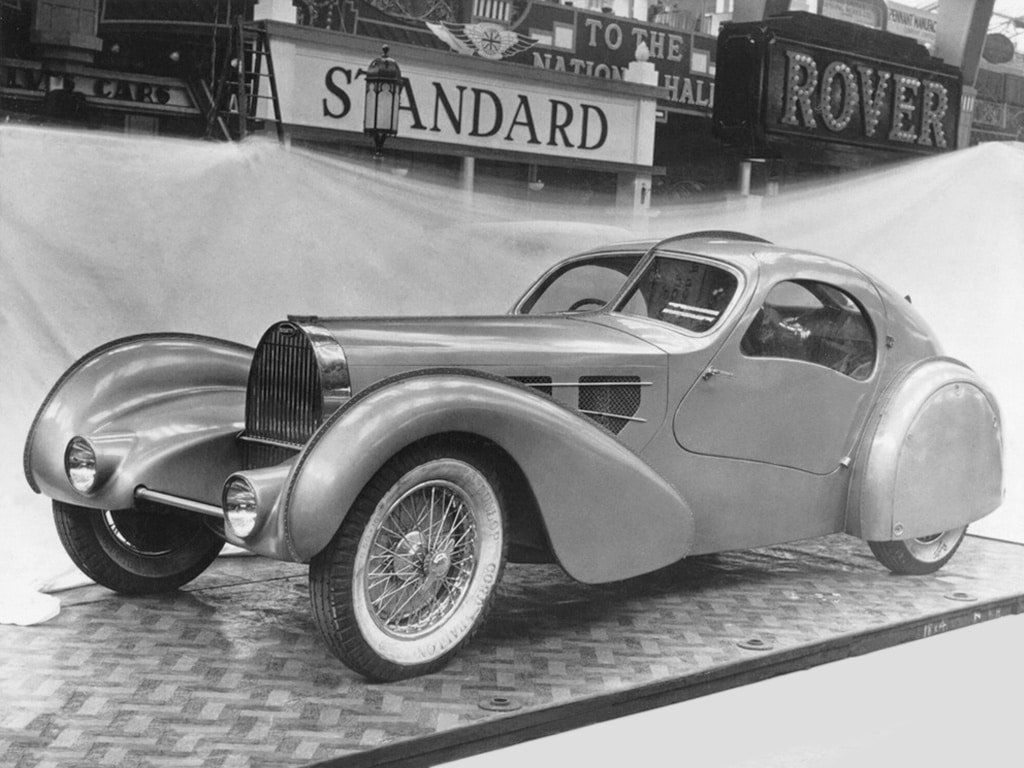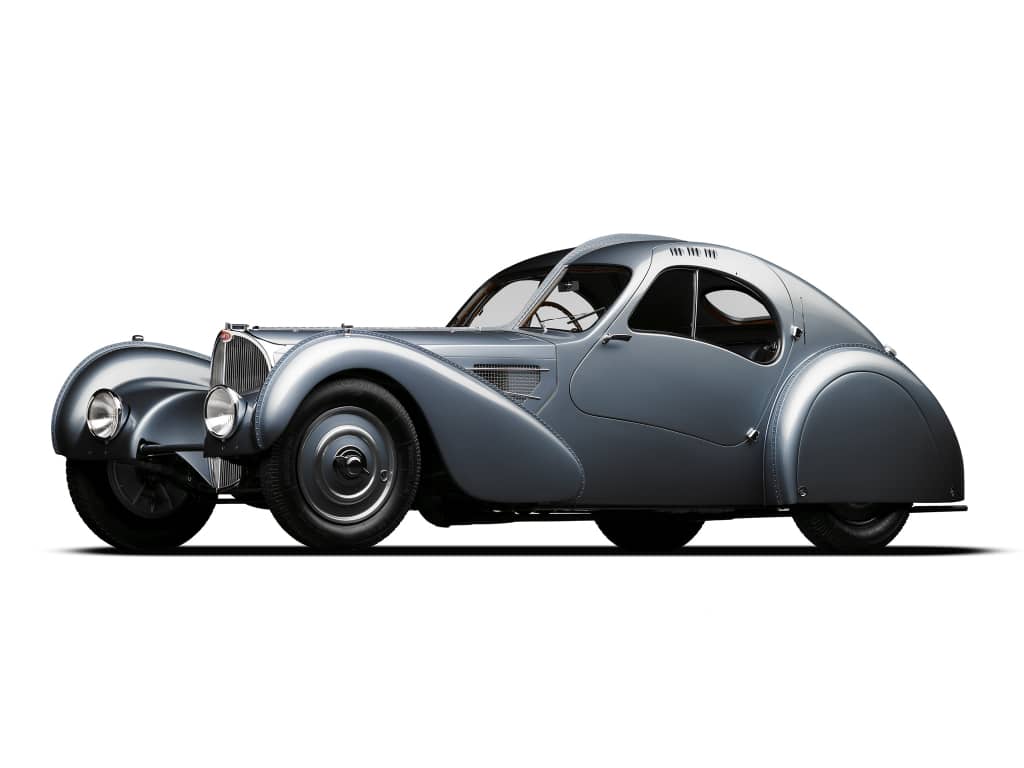The pre-war French luxury and performance cars are one of the most sought-after classics of all time. Seductive shapes, powerful engines, and motorsport provenience made those coupes and convertibles a true connoisseur’s dreams and crown jewels of any notable collection. However, amongst all those glorious machines, one model perfectly personified the whole era and probably remained its prime example – Bugatti Type 57. Occupying the space between reality and fiction, those mythical machines were the best cars Bugatti ever made. Unfortunately, they were also the last relevant series before the legendary car manufacturer closed its doors in the early ’50. Let’s see what makes the Type 57 so iconic.
By 1934, the year when Type 57 was introduced, Bugatti was already a world-known luxury and sports car brand. Characterized by unique engineering and design, Ettore Bugatti was obsessed with technical innovations, engineering excellence, and motorsport success. Models like Type 35 ruled the Grand Prix circuits and his elegant luxury models were an integral part of high society. However, his uncompromising approach meant that the company often flirted with bankruptcy, and failed megalomaniac projects like Type 41 Royale put additional strain on the brand. In the early ’30s, Bugatti desperately needed a hit and a car that would fight domestic competitors like Delahaye and Delage, as well as Bentleys, Duesenbergs, and other high-class automobiles of the period. The new car had to be faster, better engineered, and more powerful than the predecessor, the Type 49, which was pretty outdated by the early ’30s.

Even though Ettore was known as an automotive despot and control freak who held a tight grip on the company and its endeavors, he wisely allowed his son to construct the new model. In his early twenties, Jean Bugatti was a very young but immensely talented engineer who could incorporate his father’s wishes, increase power and handling characteristics and present a thoroughly modern automobile capable of many roles. In 1934, Bugatti proudly presented the Type 57. Interestingly, when Bugatti presented the Type 57, they didn’t showcase the complete vehicle, just the chassis with the engine and drive train. In those days, small companies like Bugatti didn’t have the capacity to produce the bodies themselves, and customers basically bought the running chassis from Bugatti and then commissioned one of the numerous coachbuilding workshops to acquire tailor-made bodies for their new car. The Bugatti Type 57, therefore, can be found with numerous body styles, from convertibles and coupes to saloons and roadsters.

Although the Type 57 wasn’t a completely new design, it was immensely improved and featured a redesigned straight-eight engine with 3.3 liters of displacement and 135 hp in base trim. The engine featured double overhead camshafts, which was a rare and race-derived solution that provided a high output. Jean envisioned that Type 57 would use spur gears rather than belts (or chains), and Bugatti’s artisan mechanics carefully crafted the whole engine. It had advanced hydraulic brakes, introduced during the production run, and significant performance. Depending on the version and body, the Type 57 could reach 115 mph, which was considered Ludacris speed in the mid-1930s. The standard Type 57 was sold until 1940, and about 630 examples were constructed.

But that was just the beginning of the Type 57 story, and Jean Bugatti knew that this chassis had potential, so in 1936, he constructed Type 57T and 57C. The T version for “tuned” had a higher top speed but “C” was a true monster, delivering 160 hp with the help of a mechanical compressor. However, Jean realized that in order to go faster, the Type 57 needed to be lower and more dynamic. This called for thorough reengineering of the chassis, the addition of the dry-sump system, and a host of other improvements along with the new model designation. The Type 57 S and Type 57 SC was the ultimate expression of Jean’s approach and one of the fastest cars of its era. With the addition of the supercharger, the reengineered engine now delivered massive 175 to 200 hp and could push the Type 57 to over 120 mph. Of course, S/SC models were very expensive, and Bugatti originally made only 43 Type 57 S models and just two Type 57 SC cars. However, many owners of T57 S retrofitted the superchargers after taking the delivery to increase their vehicles’ performance. In 1936, Bugatti won the French Grand Prix with a particular Type 57G “Tank,” which used a much bigger, 4.7-liter engine and aerodynamic body.
But the story about the Bugatti Type 57 is only complete by mentioning two amazing sub-models. The first one is the long-lost Bugatti T57 Aerolithe, introduced in 1935. The car was basically a concept vehicle made on shortened chassis and with the body out of Elektron. This unique alloy was made from aluminum and magnesium and is still one of the lightest alloys in car production. However, it was immensely expensive (and it is now) and was known to be very flammable. Despite being the star of the car show circuit, Type 57 Aerolithe was lost in the late ’30s and probably scraped or burned to the ground.

The other model is the esoteric and mystical Bugatti Type 57 Atlantic, the pinnacle of the T57 range and one of the most expensive cars on the planet. Featuring the design used on Aerolithe but with a slightly modified body, Atlantic was produced in very limited numbers with unique features and engine and aimed at the most discriminating clients. For years, those cars were rarely seen outside the collections, and when they do go on sale, they fetch astonishing prices. Recently, chassis No 57473 sold for over $40 million!

Even though the sales of Type 57 were satisfactory, with over 700 cars being delivered, its development was stopped by two unfortunate circumstances. The first was the tragic death of Jean Bugatti in 1939 in a traffic accident that thoroughly shook the company and his father. The second was WWII, and production of Type 57 stopped just as the German forces invaded France and forcefully took over the Bugatti factory to manufacture arms.





